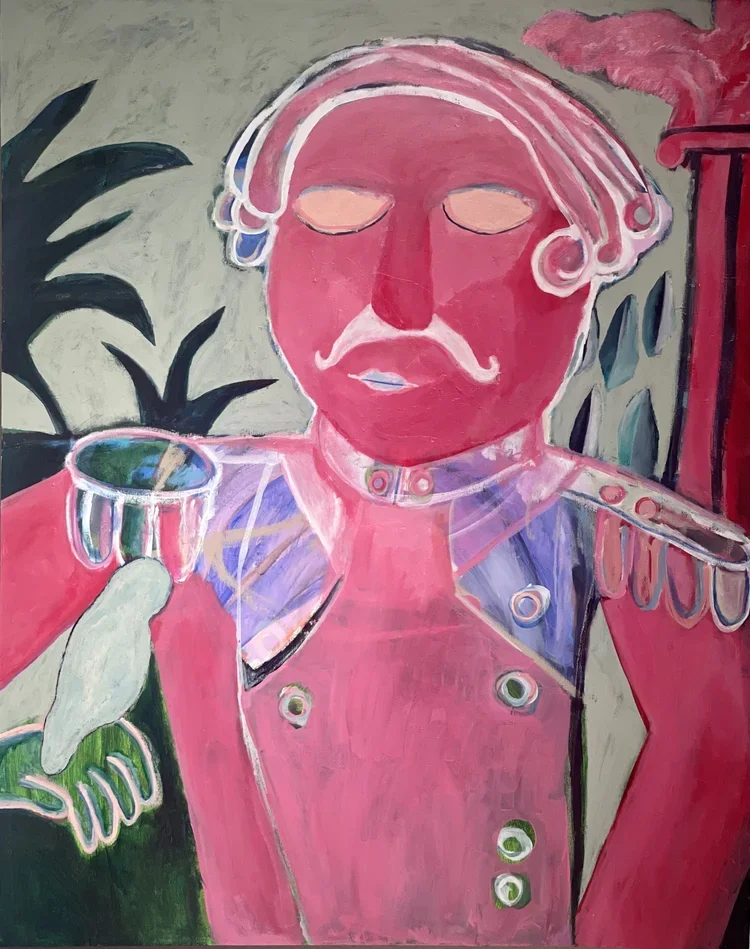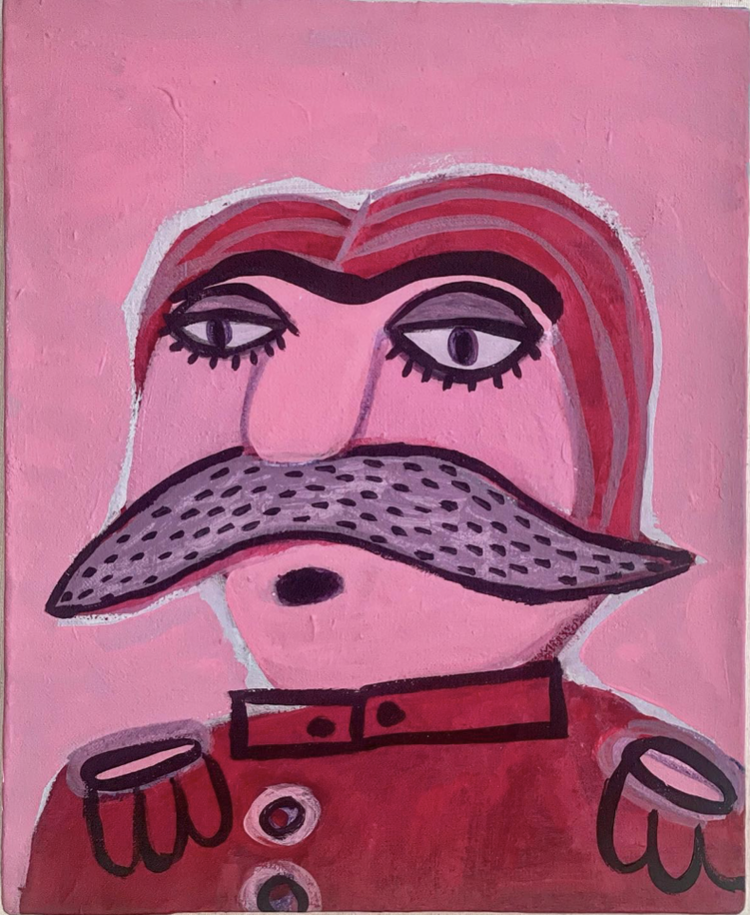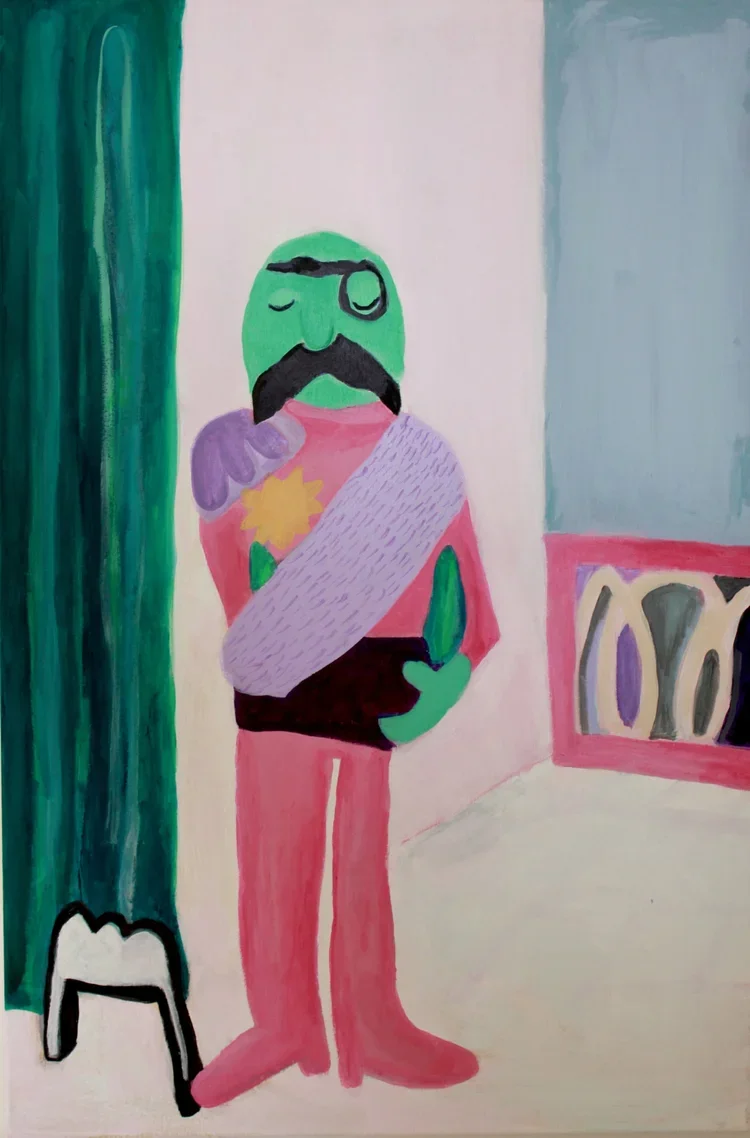Portraits
“Portraiture used to be the domain of the state, and artists were patronized by aristocracies to depict themselves and their lineage for the world to remember them by. The paintings were curated to depict power and wealth; jewels, velvet and lace, crowns, armour, and military accolades symbolized the status of those depicted. These paintings often also contained valuable pigments colonized from exotic parts of the world. They were large and expensive to make, affordable only by those who ruled kingdoms and coffers. Everything about the way these paintings were made elicited the reverence of a subject for a queen. The message was clear: the depicted figure was worthy of iconography.
Balagamwala is aware of portrait painting’s potential for myth-making and memorialising, and she is unafraid to subvert it. Her dexterity and shrewd understanding of painting’s formal concerns enables her to impact the way her work is experienced. She draws figures with exaggerated features morphing into animal horns, beaks, and fruit in a quirky medley of associations. Even when the figures retain their human form, their proportions feel presumptuous. In one painting, the notion of a canvas stretching out to accomodate a two feet long nose is absurd, as is the frame length which must accompany it. The extent of these exaggerations turns idiosyncrasies into mockeries. There is no reverence in the depictions here, and the only seriousness feels that of the need for play.
The mostly atonal pastel palette of these paintings also contains irony. Historically royal markers such as the precious blue pigment of lapis lazuli are traded in for the colors of industrial plastics and cheap children’s tools; so bright and loud there is no room for the subtle grace of stateliness. The frames containing these paintings have matching palettes to boot. Once, these beautifully engraved, ornamental frames were gilded symbols of power and money, built to fit the elegance within them. But now, they have been repainted into gaudy aesthetic faux pas, begging of the figures depicted: Who are these strange characters, or rather caricatures, making dubious aesthetic choices and spending money in all the wrong places? If these portraits are the imaginations of their figures, then the imaginations are that of self-righteous and obnoxious men who, as the lords of their own myths, become spectacles for us to behold.”
-Fiza Khatri, from States of Irreverence, catalogue essay for exhibition Big Men Wear Really Big Shoes, Sanat Gallery, 2018







